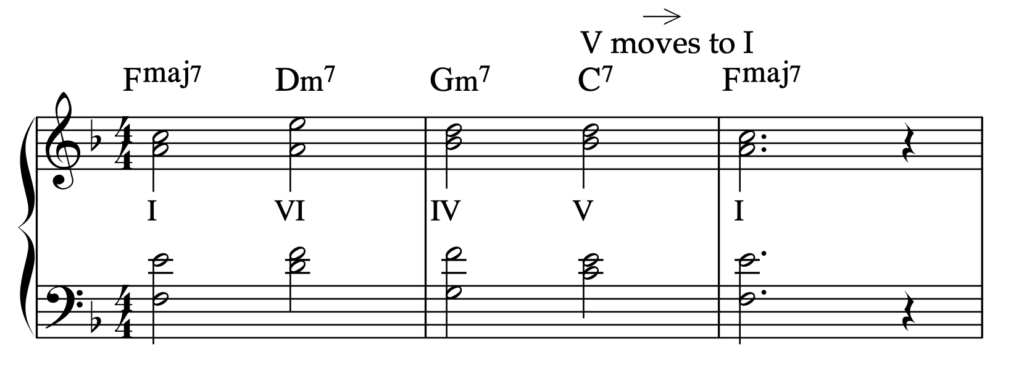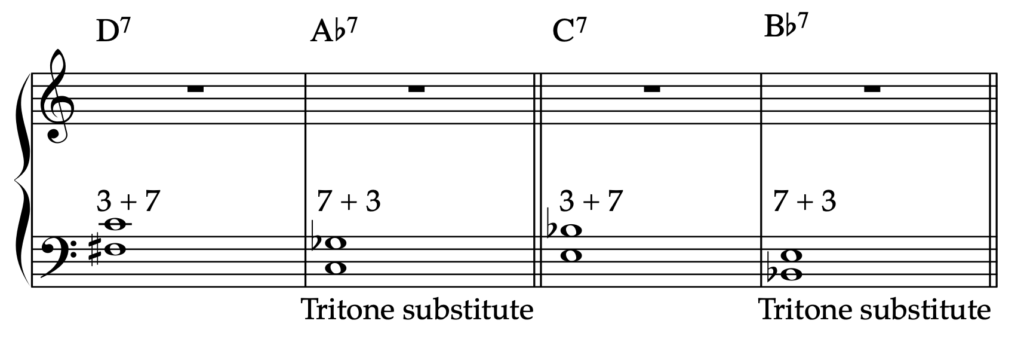The turnaround in jazz, part 3.
The jazz turnaround is a sequence of 4 chords and appears in many guises.
In part 2 of the turnaround in jazz we looked at a ‘I-VI-II-V’ chord sequence in the key of F major.

We then exchanged the VI minor chord (Dmin7) for a dominant 7 (D7).

This has now created a second V – I (D7-Gmin), the first being C7-F.
And because the presence of any dominant 7 chord gives us the opportunity to add altered notes,
both these dominant 7 chords contain a flat 9.
We can now take this one step further in the jazz turnaround by turning these dominant 7 chords into their tritone substitutions.
Tritone substitution is a subject that I’m not going to deal with in this article but you do need to know the following:
- 1) We substitute the dominant 7 chord, usually when it is pointing to its tonic (V-I). So in the above sequence we are looking to substitute the D7 and C7.
- 2) We move the dominant 7 up by a tritone, in other words by 3 whole steps or 6 half steps. This can also be described as an interval of an augmented 4th. Therefore D7 moves up to Ab7 and C7 moves up to Gb7.
- Our jazz turnaround chord sequence now looks like this:

- For now just notice that chord two (Ab7) moves down just a half step to the G minor. And chord four (Gb7) also moves down just a half step to the Fmaj7.
It’s also worth pointing out that notes 3 and 7 are in both the original dominant 7 chord and its tritone substitute.
In other words the notes F# and C are notes 3 and 7 of the chord D7.
And the same notes, the 3 and 7 of the chord Ab are the same but in reverse order: C and Gb.
Similarly, the notes E and Bb are notes 3 and 7 of the chord C7.
And the same notes, the 3 and 7 of the chord Gb are the same but in reverse order: Bb and E.

Learn more about the jazz turnaround by subscribing to my course. Just click here!